Filling someone else’s shoes
In smaller companies and start-ups it is fairly common that everyone does everything and try to chip in to stay alive. CTO, CPO, Head of Product and Head of Engineering is probably even the same person.
As the company grows, the need for more clarified positions comes apparent. Someone that used to be Product Manager, Team Lead and Engineer now needs to focus fully on where they make most value and this opens up for others to fill their shoes with any of their other roles.
Filling the shoes of a previous multitasker can become quite tricky, since the people who depend on you could hold you responsible for many of the responsibilities the previous person had.
Enter the Roles and Responsibilities workshop to clarify this.
I’ve run a couple of different session’s of this workshop and it depends a bit on the attendees current roles. With plenty of people and many roles you try to dissociate the person from the role to identify the things they do, that probably needs to get done, but might not part of their role. With plenty of people with the same role you focus on what some people do in their role that others don’t.
Both of them is to clarify what is expected within your role and to clarify what else you do that is not part of it.
“Plenty of people and many roles to clarify”-session
1. Add all names to a board.
Fairly simple, no explanation needed.
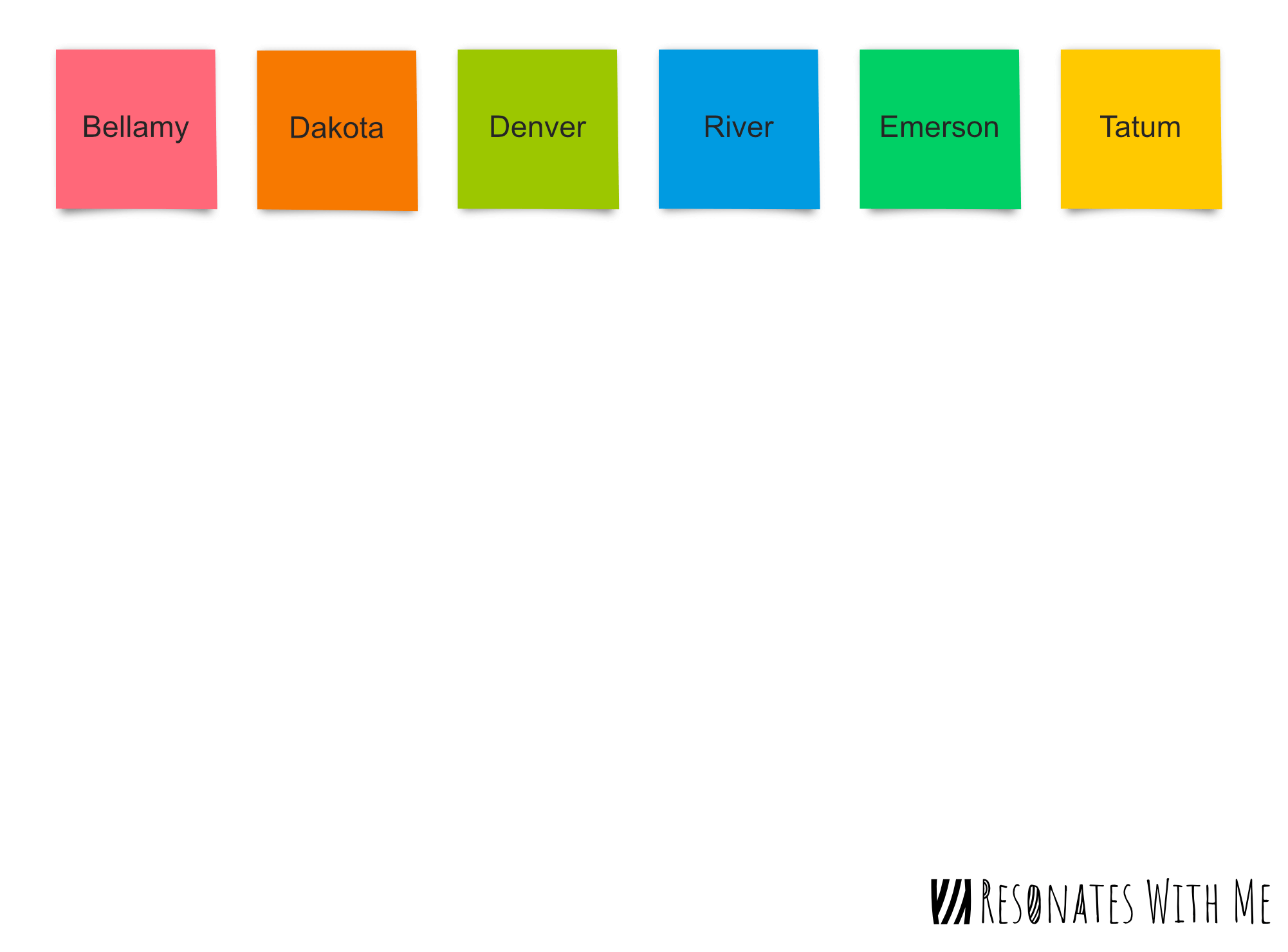
2. Take 10 minutes and write up everything that you feel you are responsible for
A lot of stress comes from uncertain responsibilities, things you think you are accountable to do but possibly don’t have a mandate to do.
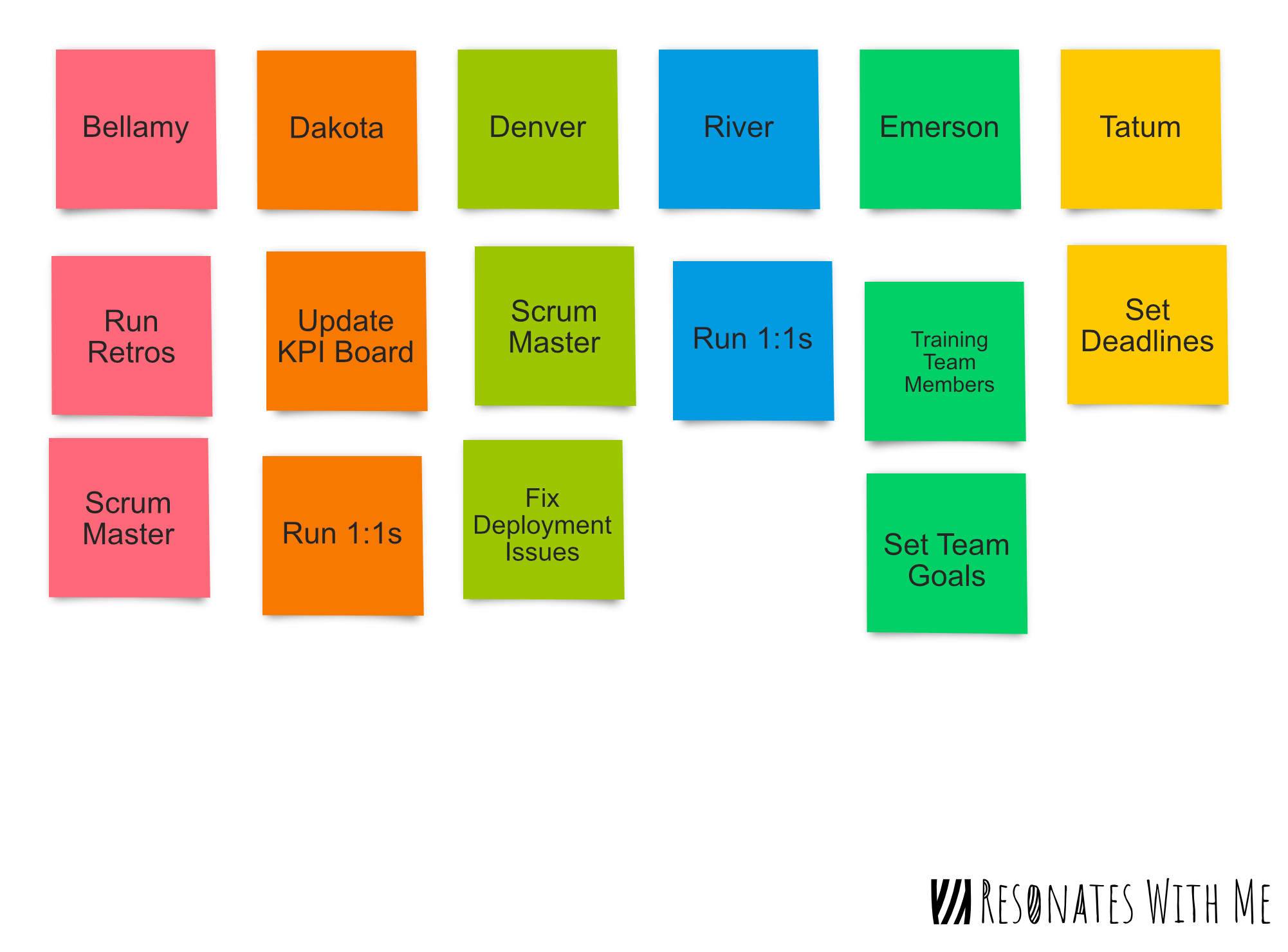
3. Take 10 minutes to write up responsibilities that you think the others have.
Now it’s time for the other members to give their point of view of what is missing or needs highlighting.
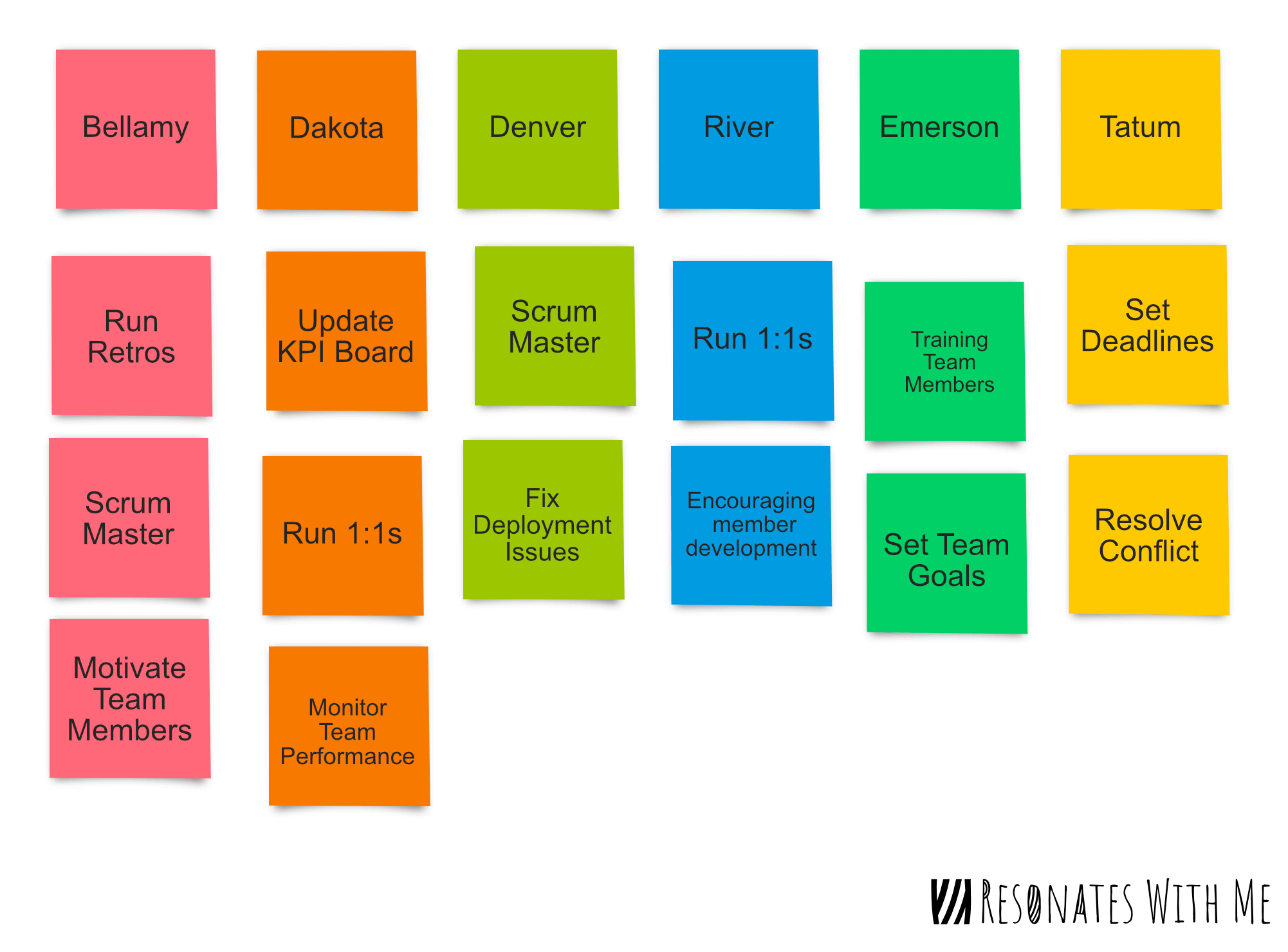
4. Switch the names to the job title that person has
The twist comes when you dissociate the person with their role.
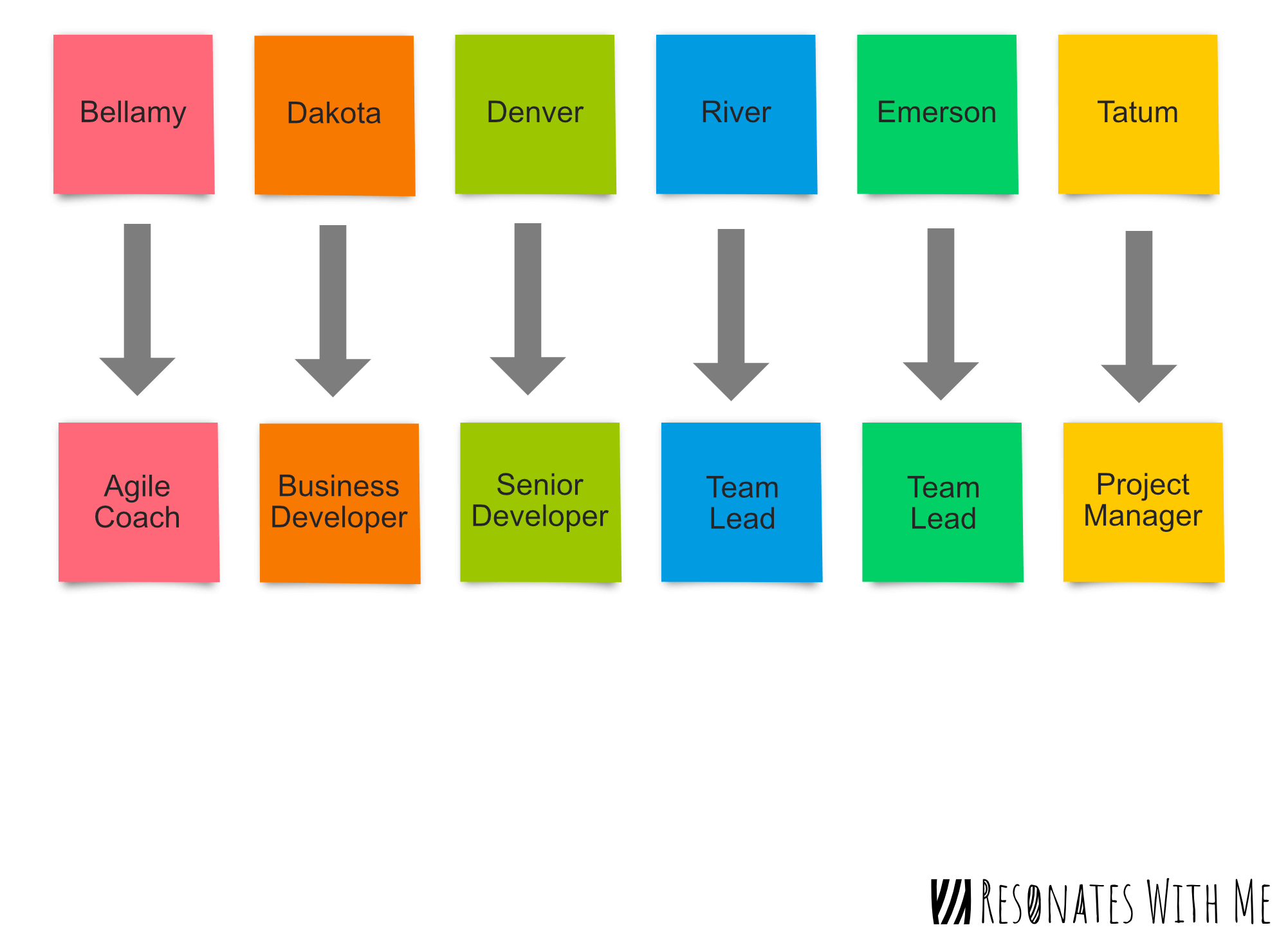
5. That should not be part of your role!
With the roles, instead of names, on top of the column the team goes through all notes and identify the odd responsibilities. Should they be part of that role? Should someone else do it?
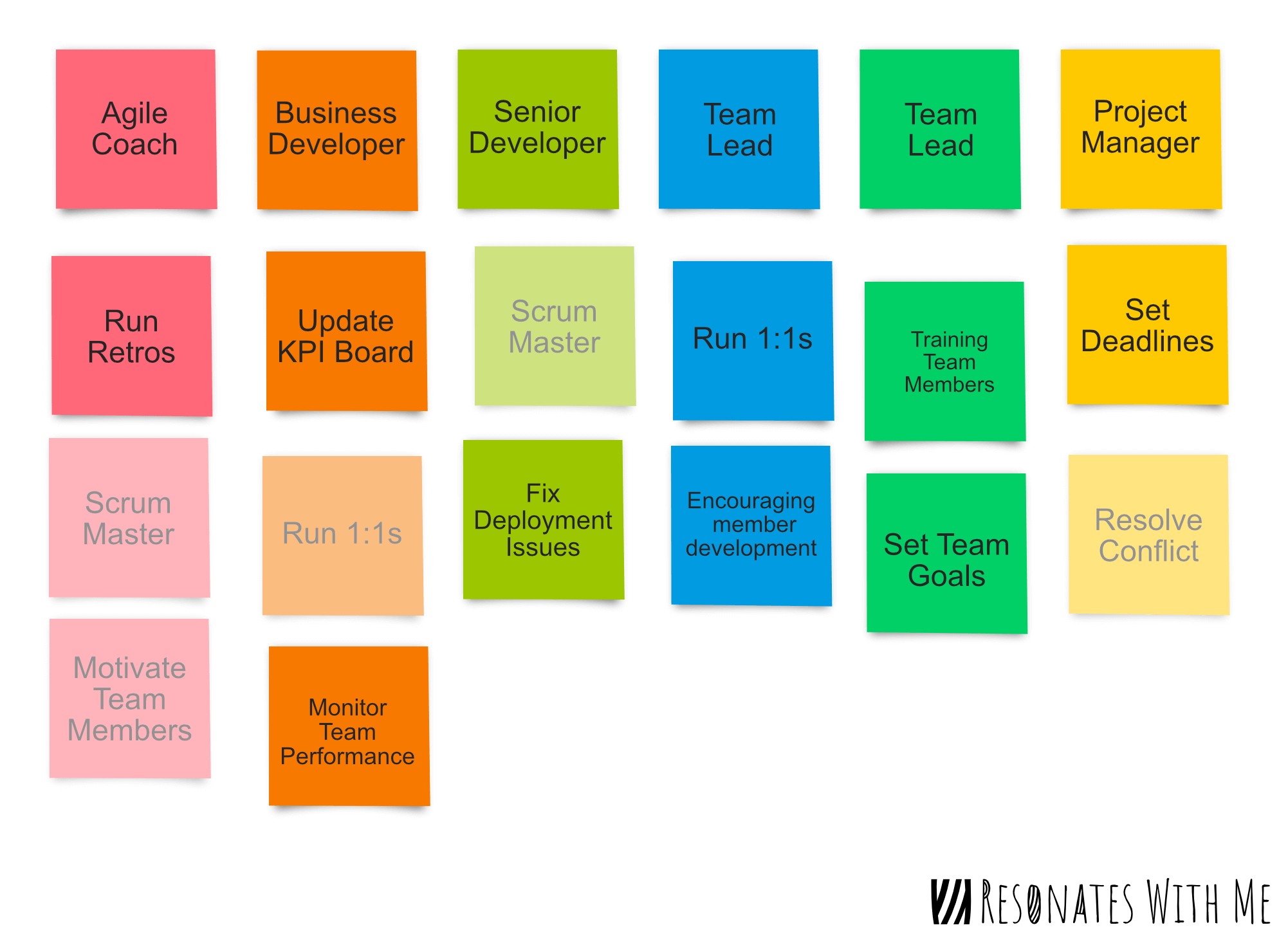
Closing the session you identify next steps. How do you follow through on the changes in responsibility?
“Plenty of people with the same role”-session
1. Add all names to a board
Yup, just do it.
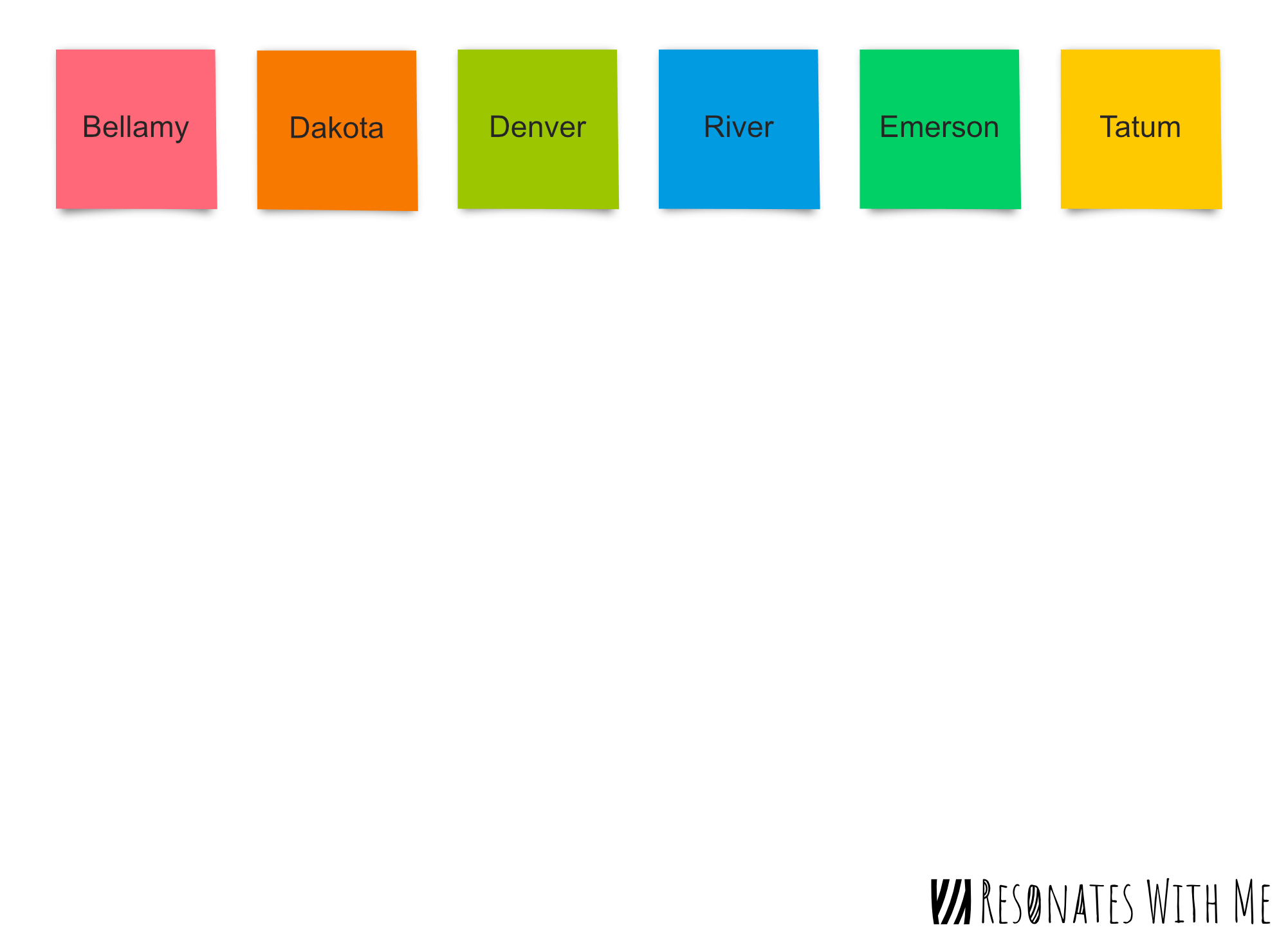
2. Take 10 minutes and write up everything that you feel you are responsible for
A lot of stress comes from uncertain responsibilities. Things that you feel that you are responsible for but possibly not have a mandate to do.
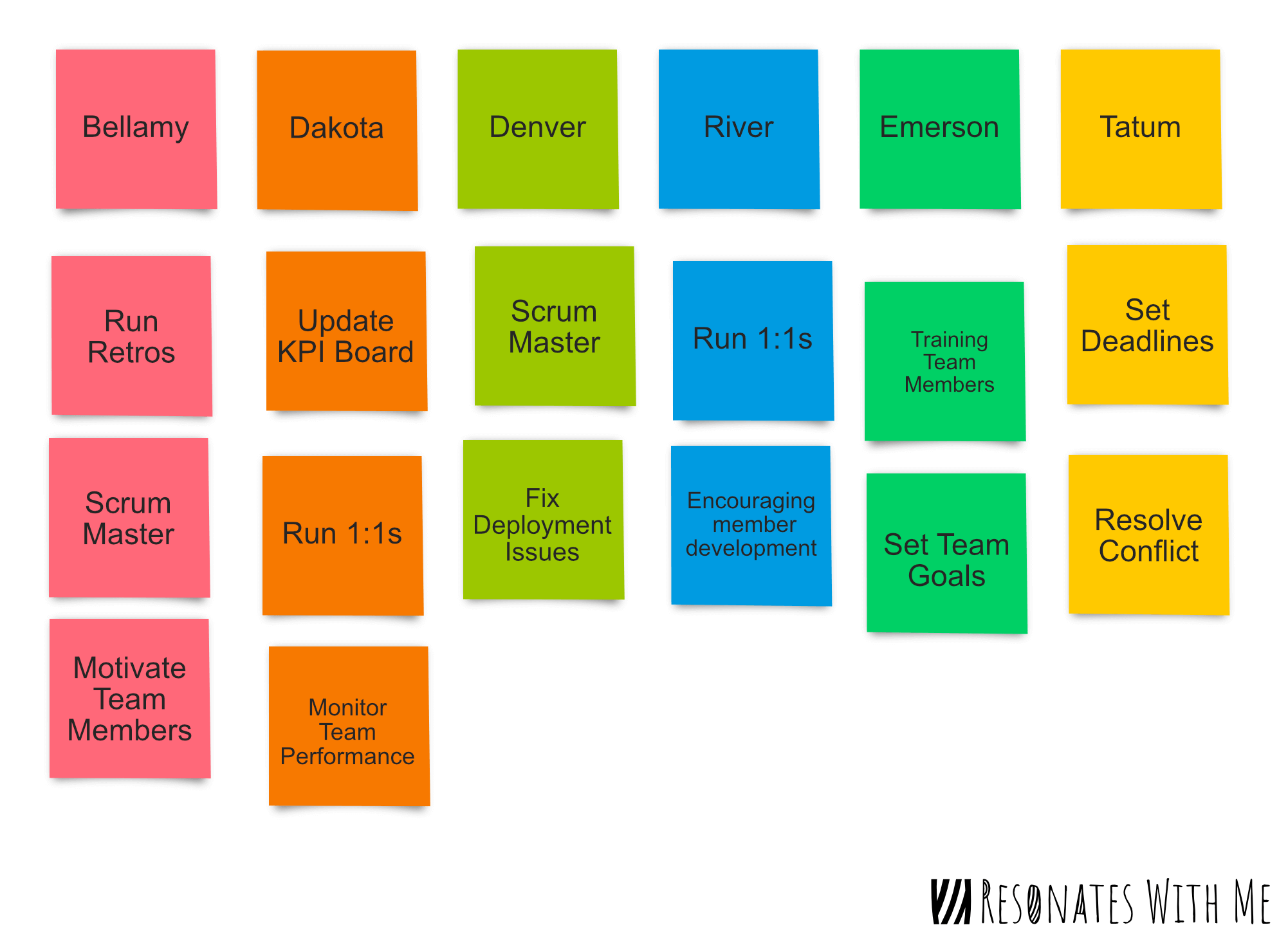
3. Switch the names of the columns
Similar to plenty of people and many roles session there is a twist! Instead of changing the name to role, you change columns between you all.
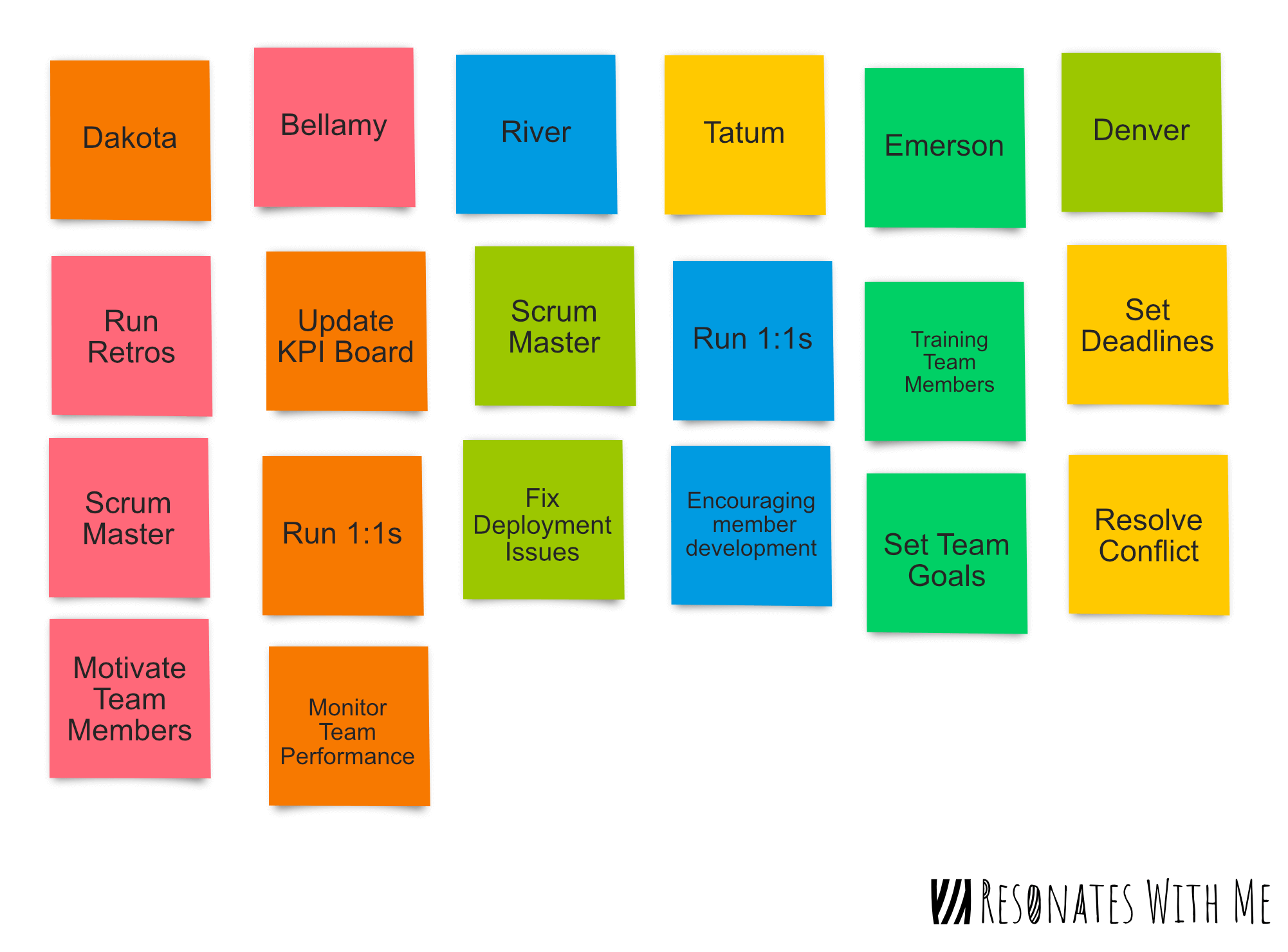
4. That’s not part of my role!
Look at your new column. Do you think all of these tickets should be your responsibility? Or they part of something else that the previous owner has responsibility over.
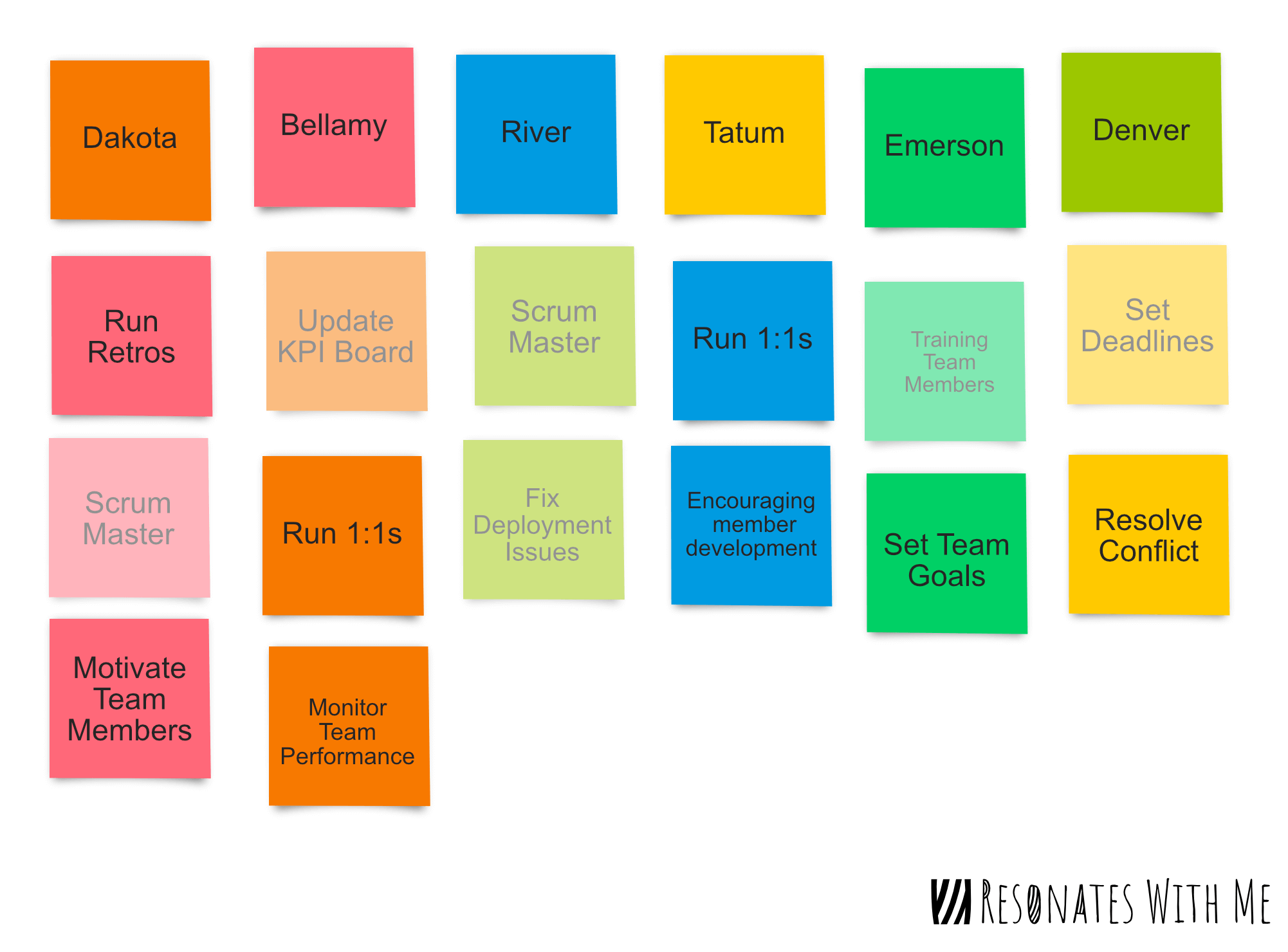
Closing the session you identify next steps. How do you follow through on the changes in responsibility?
“With awareness come responsibility and choice” Amanda Lindhout
By being aware of what others think you are responsible for and setting the right expectations when you are not responsible, will make your life much easier.
And remember, that stuff still needs to get done and even though tasks might not be part of your role it still might be part of your job.